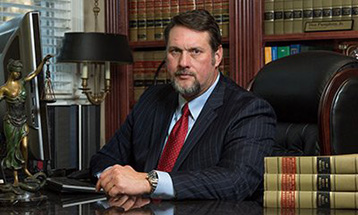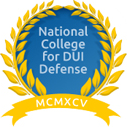- DUI
- Criminal Defense
- Florida DUI
- Traffic Offenses
- Drug Charges
- Marijuana Charges
- Violent Crimes
- Domestic Violence
- Temporary Injunctions
- Weapons Charges
- Theft Crimes
- White Collar Crime
- Juvenile Offenses
- Sex Crimes
- Violation of Probation
- Early Termination of Probation
- Seal or Expunge Criminal Record
- Criminal Appeals
- US Federal Offenses
- Misdemeanor Charges
- Felony Charges
- Co-Defendant Cases
- College Student Defense
- College Student Hearings
- FSU Students
- FAMU Students
- Florida Panhandle Arrests
- Extradition to Florida
- Bench Warrants / Warrants
- Emergency Bond Hearings
- Gambling Charges
- Drone Arrests
- Marsy’s Law
- UAS Infractions
- Introduction of Contraband
- Lying to Police
- Locations
- Case Results
- Our Firm
- Media
- Resources
- Blog
- Contact Us
How the Metaverse Could Change Criminal Defense Forever
March 12, 2022 Don Pumphrey, Jr. Criminal Defense Social Share
The metaverse is a hot topic right now. With tech giants like Mark Zuckerberg and Satya Nadella referring to it as the future of the internet, many people are clamoring to get in on the action and predict how it will change life as we know it. Now, what exactly IS the “metaverse”? Well, it’s not a specific, easily definable thing. Much like referring to “cyberspace” in the 90s, the metaverse is just another, more futuristic word to refer to how humans interact with technology. But the metaverse’s biggest thing is virtual reality. It is meant to create a virtual world – one that exists even when you log off – and produce an “augmented reality that combines aspects of the digital and physical worlds.” If the metaverse does all that the early proponents are claiming it will – it will change everything. The economy will undergo a major shift, with a “digital economy where users can create, buy, and sell goods.” How will the metaverse, or virtual reality, affect criminal litigation? Well, a Florida defense attorney recently filed a motion in court to ask the judge to have jurors use virtual reality goggles in order to view the simulated crime from the defendant’s perspective.
Virtual Reality in Criminal Litigation
With this recently filed motion, a Broward County group of jurors may be one of the first in the entire country to hear expert testimony using virtual reality goggles. Ken Padowitz, a former prosecutor, and current defense attorney is representing a man accused of attempting to murder his neighbor by hitting him with a Dodge Viper. He motioned the court to “put the jurors in the driver’s seat through the use of the latest technology – virtual reality goggles that promise to give them a look at the alleged crime from the perspective of the defendant.” Presiding Broward Circuit Judge, Ernest Kollra, is hearing the case and deciding whether the defense can have the jury wear virtual reality goggles while listening to an accident deconstructionist’s expert testimony in order to fully immerse themselves in the story.
Has This Been Done Before?
Definitely not in Broward. Padowitz is “fairly certain” it has not been done anywhere in the nation. Padowitz is a long-time trailblazer of criminal defense litigation. In the 90s, he was a prosecutor in Broward County, trying a manslaughter hit-and-run case. He persuaded the court to allow the jury to view a “two-dimensional computer animation on a television screen.” The court’s decision was reviewed by an appellate court who upheld the lower court’s ruling. This decision “paved the way for the use of computer animation in countless criminal trials since.”
Having conquered 2-D animation decades ago, Padowitz has his sights set on the final frontier – virtual reality. His motion is being heard on Friday, and so far, the State Attorney’s Office on the case has not filed a responsive motion. Padowitz has high hopes, stating that “[a]n expert’s opinion is admissible to present to a jury . . . we’re just taking it one step further.”
Why Virtual Reality?
When asked what the benefits would be of having the jury fully immersed in the expert’s accident reconstruction testimony, Padowitz replied that “[t]hey are going to be able to look as if they are right there, able to look around, to see what the defendant saw.”
More Details About the Case
Padowitz is representing Benjamin Siegal, a 47-year-old man facing thirty years in prison if convicted of the first-degree attempted murder charge against him. Padowitz hired an accident reconstruction expert to testify that his client did not strike the victim with his car intentionally. Virtual reality comes in with the presentation designed by Eyewitness Animations, a Pompano Beach graphic company that will show the jury exactly what the expert’s findings are – as if they were in the defendant’s shoes. Padowitz states that since the expert testimony is admissible and the illustration is just “an extension of the expert’s testimony” he is hoping it is deemed admissible as it will show to the jury as if they were behind the wheel, that “[t]here was no intent to commit a murder.”
How Will it Look to the Jury?
The virtual reality, according to Eyewitness Animation’s president, Jack Suchocki, would “put the juror between the two front seats of the vehicle.” He said that virtual reality is easy to use and incredibly flexible, allowing the jury to have a 360 view of the entire crime scene. This means that jurors could even turn around in their seats to view the back seat of the car (though Suchocki said this would be a misuse considering the intended use of the virtual reality goggles). Interestingly, the jurors will be recorded. Suchocki states that “[o]ne of the benefits of this is we can actually record what each juror is looking at.” This will help ensure that the jurors are focusing on the evidence and important aspects of the crime scene, not just playing around with the goggles.
What’s Next?
Padowitz awaits a ruling on his motion, scheduled to be heard on Friday. As for the use of virtual reality in the future, it could “force a tradeoff that affects both prosecutors and defense lawyers” because “if the technology worked as promised, lawyers won’t be able to see the initial reactions of their audience,” like their eyes. Padowitz is not worried about this, stating that “[t]he reality is, you want to see the jury and you want to see their face during the trial … we’re really watching the video with them and using that, after the jury sees it, to make our arguments.”
Written by Gabi D’Esposito










